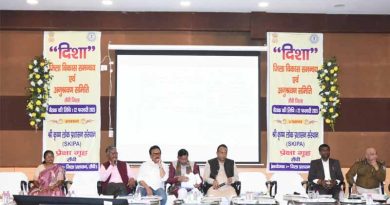SC upholds constitutional validity of Section 6A of Citizenship Act by 4:1 majority
Insight Online News
New Delhi, Oct 17 : The Constitution Bench of the Supreme Court by a 4:1 majority on Thursday upheld the Constitutional validity of Section 6 A of the Citizenship Act of 1955, introduced after the Assam Accord in 1985, which barred Indian citizenship to Bangladeshi immigrants who entered India before March 1971.
Section 6A considered those entering India between 1966-71 as citizens sans voting rights for 10 years.
A five-judge Constitution bench comprising Chief Justice of India (CJI) DY Chandrachud, Justices Surya Kant, MM Sundresh and Manoj Misra upheld the validity of the provision in a 4:1 verdict , with Justice J B Pardiwala dissented.
The bench upheld the constitutional validity of Sec 6A. It said Parliament had legislative competence to enact it.
Justice Pardiwala’s dissenting judgement quashed Section 6A prospectively.
The Constitutional Bench of the Supreme Court was hearing a batch of petitions challenging Section 6A of the Citizenship Act 1955.
The Court had reserved judgment almost 11 months back in December 2023.
As per Section 6A, people who entered India between January 1, 1966, and March 25, 1971, and have been living in Assam will be allowed to register as citizens of India, subject to the provisions of sub-section (6) and (7), all persons of Indian origin who came before the 1st day of January 1966 to Assam from the specified territory (including such of those whose names were included in the electoral rolls used for the General Election to the House of the People held in 1967) and who have been ordinarily resident in Assam since the dates of their entry into Assam shall be deemed to be citizens of India as from the 1st day of January 1966.
The CJI said, “The Central government could have extended the application of the Act to other areas, but it was not done because it was unique to the magnitude of Assam.”
Reading out the majority judgment, Justice Chandrachud said enactment of Section 6A was a political solution to a unique problem faced by Assam because the huge influx of illegal immigrants to the state after the creation of Bangladesh seriously threatened its culture and demography.
He said that one of the major reasons for students agitation in Assam was the dilution of voting rights of the indigenous population because of the huge influx of illegal migration from Bangladesh and Section 6A attempted to address the precarious situation.
The Bench also upheld the March 24, 1971 cut-off date for entry of Bangladeshi migrants, saying India had taken a sympathetic view given the atrocities on Bangladeshis during Pakistan’s operation Searchlight. After March 1971, the influx of migrants was viewed differently by the goverment, it said.
In a separate opinion, Justice Surya Kant, writing for himself and Justices M M Sundresh and Manoj Misra, agreed with CJI’s opinion. Justice Kant examined Sec 6A threadbare and said the government was competent to take measures to preserve law and order as well as the interest of citizens.
Rejecting arguments that Section 6A can’t be enacted only for Assam and not applied to West Bengal, Meghalaya and Mizoram which too faced an influx of Bangladeshi migrants, Justice Kant said the problem of Assam was more severe and hence the government could act to address the situation there.
Justice Kant, referring to Sarbananda Sonowal’s judgments for the detection of Bangladeshi illegal migrants, said the state has the power to identify and deport illegal migrants through not only the Foreigners Act but also under other similar laws for the purpose.
The Bench asked the Centre and state government to effectively implement directions in Sarbananda Sonowal judgments for the identification, detection and deportation of Illegal Bangladeshi immigrants.
Justice Kant said the Supreme Court will from now onwards monitor this identification and deportation process.
The majority judgment by Justice Kant declared that those who have entered Assam from Bangladesh on or after March 25, 1971, are all illegal immigrants, who must be identified, detected and deported.









